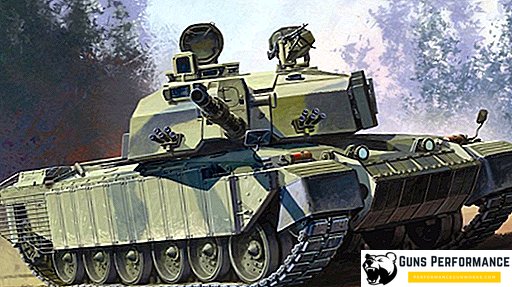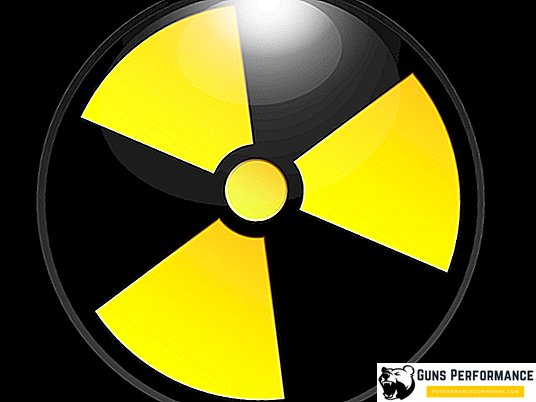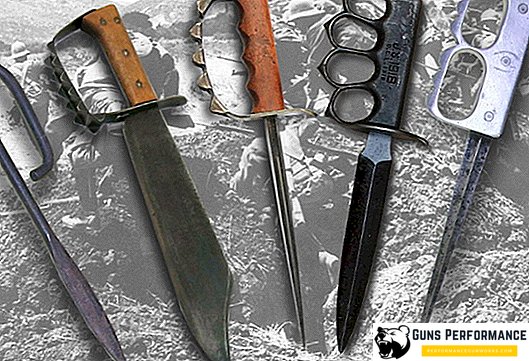Boeing 777 - long-haul passenger aircraft. Operated from 1995 to this day.
Overview of the salon and the location of the best places
The passenger compartment of the Boeing 777 is able to accommodate from 301 to 407 passengers, depending on the layout and modification options of the aircraft. Today, the most common Boeing 777 with a three-class version of the layout of the cabin, so it makes sense to consider this particular type of passenger compartment.
With a three-class layout, the Boeing 777 has first class, business and economy class lounges.
The first class (some sources call it business class) of the Boeing 777 aircraft is located in front of the passenger compartment and equipped (as shown in the diagram) with 14 seats arranged in two rows at numbers 1 and 2. The first class cabin has two aisles and chairs it is arranged according to the “2-3-2” scheme. The seats here are the most convenient and comfortable in the whole plane, and the distance between them is enough to stretch the legs even for tall passengers. Chairs in the first-class, as a rule, soft, with pillows, they are able to fold 180 degrees, which allows you to turn the chairs into comfortable beds for a good rest. In addition (mainly in new models), the places are equipped with multimedia entertainment systems that can brighten up the flight time. Passengers of the first class aircraft Boeing 777 offers a delicious menu with a wide selection of dishes and drinks.

First class seats are the best, not only because of their comfort, but also in location. Toilets, as a rule, are somewhat farther from the passengers' seats, so that unnecessary queues and related inconveniences were avoided.
Behind the seats of the first class there is a business class lounge (or a “Comfort” class, as indicated in some sources). This class takes places in four rows numbered 3, 4, 5 and 6. The business class cabin also has two passes, and the seats are placed according to the “3-3-3” scheme (except for the last sixth row). Chairs in the cabin of this class are comfortable, soft, equipped with folding backs. The places here are also equipped with multimedia entertainment systems that provide a fairly wide choice of movies, games and music.
The best for the business class Boeing 777 are places in the 3rd row (according to the diagram). Their convenience lies in the fact that in front of them there are no other seats, which increases the room for the legs of passengers. Also, no one can fold back the seat, thereby limiting this space. However, for these places there are certain features that must be taken into account when booking tickets. Monitors and tables for eating here are built into the armrests, which can be both a disadvantage and an advantage for different people.
Next to the business class is an economy class lounge. The chairs here are comfortable and soft and, like other classes, can be equipped with multimedia entertainment systems. However, the distance between the seats here is significantly less than in other classes, although it corresponds to international standards. Economy class armchairs have folding backs that can deviate only at a certain angle. There are also two passes here, and the seats can be located either according to the “3-3-3” or “3-4-3” scheme, except for the last five rows (as indicated in the figure).
The best for economy class aircraft Boeing 777 are places located in rows 10 and 30 (according to the diagram). Their convenience is explained by the same as for similar places of business class: there are no other chairs in front, and therefore there is more than enough space for legs. For passengers in 10-row seats, there is another plus: the spacing of food begins, as a rule, from the front seats, which provides them with a large selection of dishes and drinks.

Not the best choice would be places of economy class, located in rows numbered 28, 29 and 42. Their “failure” is due primarily to their close, almost closely, location with toilets. The sound of constantly opening-closing doors and queues - all this can seriously spoil the impression of the flight. And finally, the most unfortunate are the places in the back row (43), because they are located between two toilet facilities. There is a very limited overview for passengers, which can create serious inconvenience.
History of development of the Boeing 777
In the mid-70s of the 20th century, Boeing began developing three models of aircraft that were supposed to be a substitute for the outdated aircraft Boeing 727 and Boeing 737, as well as for the airplanes McDonnell Douglas (DC-10) and Lockheed (L-1011). The new models were named Boeing 757, Boeing 767 and Boeing 777.
Initially, the Boeing 777 was planned in two versions: short-range aircraft with a passenger capacity of about 180 people, with a range of about 5000 km - and an intercontinental airliner with a range of up to 9000 km. However, work on it was first suspended, and then completely frozen because of the difficulties faced by the designers in the design.

The company Boeing focused on the development of models 757 and 767, considering their creation more appropriate at that time. However, from the beginning of the 80s, when the mass production of the Boeing 757 and Boeing 767 began to gain momentum, the need for an aircraft that could become a replacement for the outdated DC-10 and L-1011 became obvious. Creating a successful model of a long-haul passenger aircraft could guarantee the occupation of a vacant niche and the receipt of a huge number of orders. Fuel to the fire was added by the fact that Airbus announced the development of an aircraft of just such a class - the Airbus A330.
As a result, it was decided to start developing a new aircraft, which, according to the original plan, was to be only a modification of the Boeing 767. In the late 80s, the project started with the name 767-X. According to its results, the plane was obtained with a passenger capacity of up to 330 people and having a flight range of up to 13,000 km.
However, according to the requirements of potential customers, the project had to be curtailed and the development of the new Boeing 777 began. When creating the aircraft, much attention was paid to the opinion of passengers, and all the drawings were done exclusively with the help of computer technology.
Development of the Boeing 777 lasted from 1990 to 1994. In the summer of 1994, the plane made its first flight, in 1995 it was certified, and in the same year its commercial operation began.
Modifications of the two-story liner
To date, the Boeing 777 has 6 "active" modifications and one modification in development.
- Boeing 777-200 - is a basic model of the liner, capable of taking on board from 305 to 400 passengers (depending on the layout of the passenger cabin). Flight range - up to 6000 km. The model was intended for domestic flights in the United States, which determined the sector of its customers. Since the beginning of mass production to the present, 88 Boeing 777-200 aircraft have been delivered to customers. Commercial exploitation began in 1995.
- Boeing 777-200ER - modification of the liner with increased flight range (the letters ER mean Extended Range - increased range). Also has an increased take-off weight and is intended for international flights. Commercial use of the Boeing 777-200ER began in 1997.
- The Boeing 777-200LR is a model with a further increased (up to 14,000 km) flight range, as well as an increased take-off weight by 50 tons (compared to the ER model). The letters LR mean Longer Range - a long range. Operated since 2006.
- Boeing 777-300 - modification of the Boeing 777, which is to replace the aircraft Boeing 747-100 and Boeing 747-200. It has increased passenger capacity (from 368 to 451 people). Another feature of this liner is its reduced fuel consumption by about a third. Commercial operation of the aircraft began in 1998.
- Boeing 777-300ER - version of the Boeing 777-300 with increased flight range, as well as large wing span. Operated Boeing 777-300ER since 2004.
- Boeing 777Freighter - cargo version of the aircraft, made on the basis of the Boeing 777-200ER. Commercial operation continues from 2009.

Currently, a new generation of the family is being developed - the Boeing 777X. It is known that this modification will have three options: Boeing 777-8X, which is supposed to replace the model 777-200ER, Boeing 777-9X, which will have to replace the modification 777-300ER, and also Boeing 777-8XL, which will be a replacement for models 777-200LR. Production of the first models should begin in 2020.
Aircraft device and its characteristics
Structurally, the Boeing 777 is a low-wing with a normal aerodynamic configuration. Plumage - single-chin. The liner is characterized by the fact that its body consists of composite materials by 9%, which seriously affects the strength of the structure.
The power plant of the aircraft consists of two engines of the companies Pratt & Whitney, Rolls-Royce or General Electric (depending on version).

Flight specifications of the Boeing 777 and its modifications:
| Boeing 777-200 | Boeing 777-200ER | Boeing 777-200LR | Boeing 777 Freighter | Boeing 777-300 | Boeing 777-300ER | Boeing 777-8X | Boeing 777-9X | |
| Crew, pers. | 2 | |||||||
| Length m | 63,7 | 73,9 | 69,5 | 76,5 | ||||
| Wingspan, m | 60,9 | 64,8 | 60,9 | 64,8 | 71,3 | |||
| Sweep, ° | 31,64 | |||||||
| Height, m | 18,5 | 18,8 | 18,6 | 18,5 | 18,7 | n.d. | ||
| Fuselage width, m | 6,2 | |||||||
| Interior width, m | 5,9 | |||||||
| Passenger capacity, pers. | 305 | 301 | 301 | N / A | 368 | 365 | 353 | 407 |
| (3 classes) | (3 classes) | (3 classes) | (3 classes) | (3 classes) | (3 classes) | (3 classes) | ||
| 400 | 400 | 451 | ||||||
| (2 classes) | (2 classes) | (2 classes) | ||||||
| Volume of cargo compartment, m³ | 150 | 636 | 200 | |||||
| Maximum take-off weight, kg | 247 210 | 297 560 | 347 450 | 299 370 | 351534 | 315 000 | 344 000 | |
| Empty weight, kg | 139 225 | 142 900 | 148 181 | 160 120 | 166 881 | |||
| Fuel reserve, l | 117 000 | 171 160 | 202 290 | 181 280 | 171 160 | 181 280 | ||
| Maximum cruising speed, km / h | 905 | |||||||
| Maximum speed, km / h | 965 | 945 | ||||||
| Flight range with max. payload, kc | 6020 | 10740 | 13890 | 9065 | 7035 | 10190 | ||
| Maximum flight distance, km | 9695 | 14260 | 17500 | 9065 | 11135 | 14685 | ||
| Runway length, m | 2500 | 3536 | 3410 | 3200 | ||||
| Practical ceiling, m | 13140 | |||||||
| Engines (× 2) | PW 4077 | PW 4090 | GE90-110B | GE90-110B | PW 4098 | GE90-115B | Ge9x | Ge9x |
| RR 877 | RR 892 | GE90-115B | RR 892 | |||||
| GE90-77B | RR 895 | GE90-94B | ||||||
| GE90-94B | ||||||||
| Thrust (× 2) | PW: 330 kN | PW: 400 kN | GE: 480 kN | GE: 480 kN | PW: 430 kN | GE: 510 kN | GE: 470 kN | GE: 470 kN |
| RR: 330 kN | RR: 420 kN | GE: 510 kN | RR: 400 kN | |||||
| GE: 330 kN | GE: 410 kN | GE: 410 kN | ||||||

Conclusion
Boeing 777 family aircraft today are very popular among the global airlines. The fact that today is constantly improving the old and the creation of new modifications, clearly indicates the great prospects of this series in the future.












